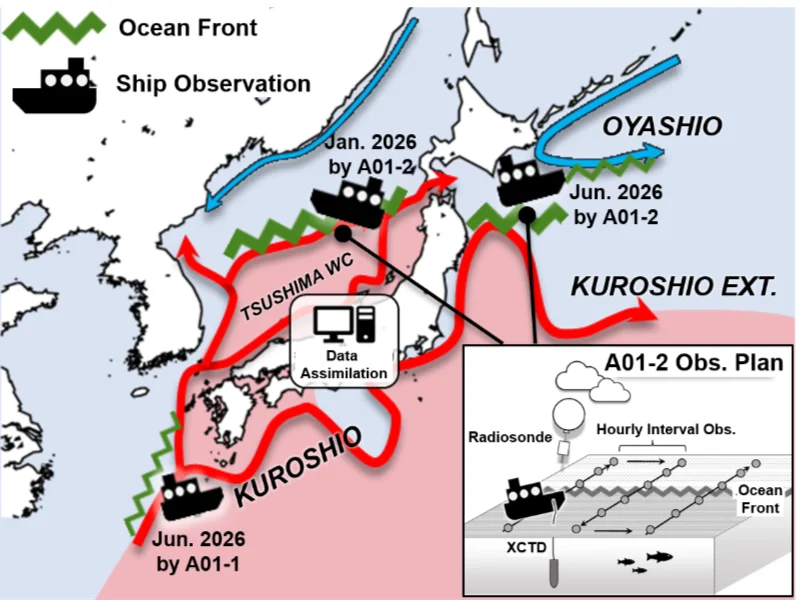Major changes are now occurring in the atmosphere and oceans surrounding Japan, threatening the country’s abundant basis of survival. In recent years, heavy rains have often occurred throughout Japan, and the winter season has experienced the strongest cold wave on record and heavy snowfalls. Rapid ocean warming in the oceans around Japan has intensified the “ocean frontal zone,” a rich fishing ground where warm and cold currents meet, to move northward and strengthen, and ocean heat waves are frequent. In this project research task, the following studies will be conducted to clarify the influence of modulation of the ocean frontal zone on the onset process of recent extreme weather events, and propose a new paradigm that “the location and strength of the ocean front determines heavy rainfalls and snowfalls.
- To describe in detail the three-dimensional high-density atmosphere-ocean structure and the associated water and heat flow in the ocean frontal zone surrounding Japan through strategic and intensive observations using ships.
- To contribute to the improvement of forecast skill by analytically and numerically elucidating the influence of ocean fronts on the onset process of recent heavy rainfall and snowfall events.
- To quantitatively assess how ocean fronts will change heavy rainfalls and snowfalls under a global warming world, using both observational and numerical approaches to evaluate the future climate changes.

